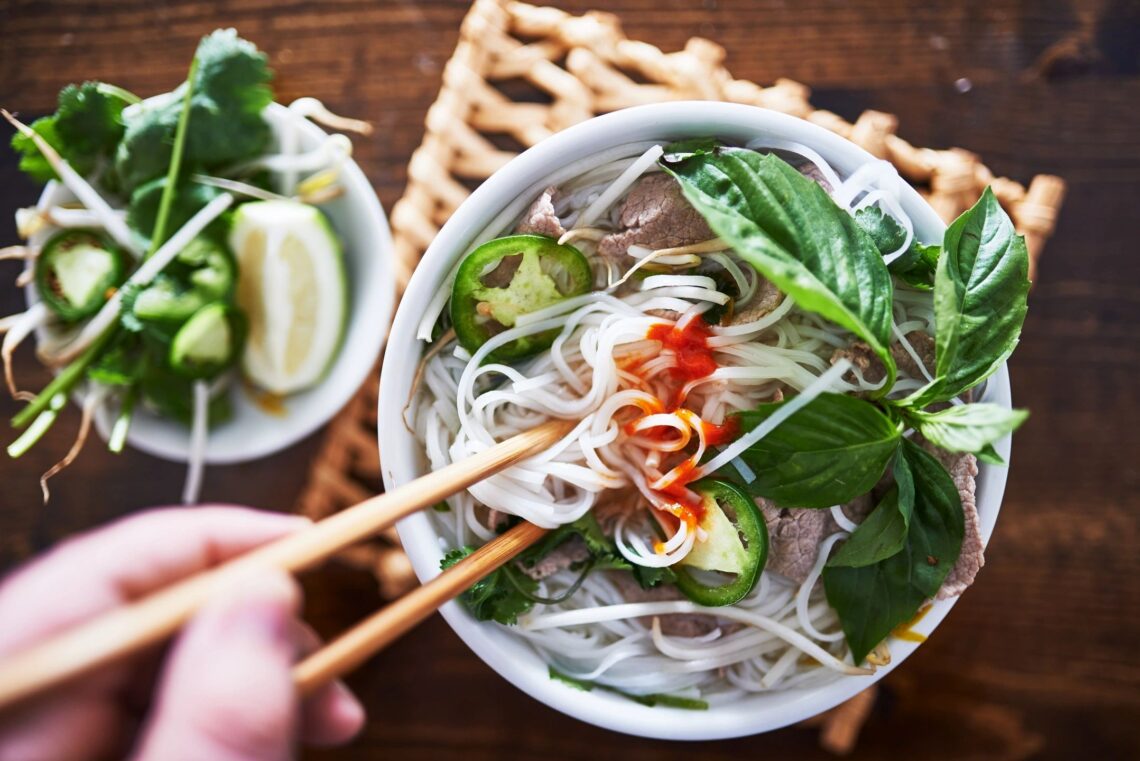
Ramen vs. Pho: A Comprehensive Comparison of the Key Differences
Ramen and pho are two popular noodle dishes that have become increasingly popular around the world. While both dishes may seem similar at first glance, there are actually a number of differences between them. In this blog post, we will explore the key differences between ramen and pho, from their origins to their flavors.
Origins
Ramen is a Japanese dish that originated in China. The dish consists of wheat noodles served in a meat or fish-based broth, often flavored with soy sauce or miso. Ramen is typically served with a variety of toppings, such as sliced pork, seaweed, and green onions.
Pho, on the other hand, is a Vietnamese dish that is thought to have originated in the early 20th century. The dish consists of rice noodles served in a beef or chicken broth, flavored with herbs and spices such as cinnamon, star anise, and coriander. Pho is typically served with a range of toppings, such as thinly sliced beef, bean sprouts, and Thai basil.
Noodles
One of the most obvious differences between ramen and pho is the type of noodles used in each dish. Ramen noodles are made from wheat flour and are typically thicker and chewier than pho noodles, which are made from rice flour and are thinner and more delicate. The texture of the noodles plays a big role in the overall flavor and experience of the dish.
Broth
Another key difference between ramen and pho is the broth. Ramen broth is typically made with meat or fish, and can be flavored with soy sauce, miso, or salt. The broth is often rich and savory, and may be served with a layer of oil on top to enhance the flavor. Pho broth, on the other hand, is typically made with beef or chicken bones, and is flavored with a range of herbs and spices. The broth is usually clear and light, with a delicate flavor that is enhanced by the addition of fresh herbs and lime juice.
Toppings
Both ramen and pho are typically served with a range of toppings, but the types of toppings used in each dish can vary widely. Ramen toppings may include sliced pork, seaweed, green onions, and eggs, while pho toppings may include thinly sliced beef, bean sprouts, Thai basil, and lime wedges. The toppings used in each dish can have a big impact on the overall flavor and texture of the dish.
Indulge in a delectable journey of flavors with our comprehensive guide on the difference between Ramen and Pho, two beloved Asian noodle dishes that will tantalize your taste buds. Dive into the rich history and cultural significance of each dish as we uncover their unique ingredients, preparation methods, and regional variations. Whether you’re a food enthusiast or simply curious about these culinary delights, our article is a must-read to expand your gastronomic horizons.
Ready to recreate these mouthwatering delicacies at home? Explore these handpicked selection of authentic ingredients and kitchen essentials, carefully sourced to elevate your Ramen and Pho-making experience. From premium-grade noodles to flavorful broths and traditional spice blends, you’ll find everything you need to whip up restaurant-quality bowls right in your kitchen.
In conclusion, while ramen and pho may seem similar at first glance, they are actually two very different dishes with their own unique flavors, textures, and ingredients. Whether you prefer the rich, savory broth of ramen or the delicate, herb-infused broth of pho, both dishes are delicious and satisfying in their own right. So why not try both and decide which one is your favorite?





